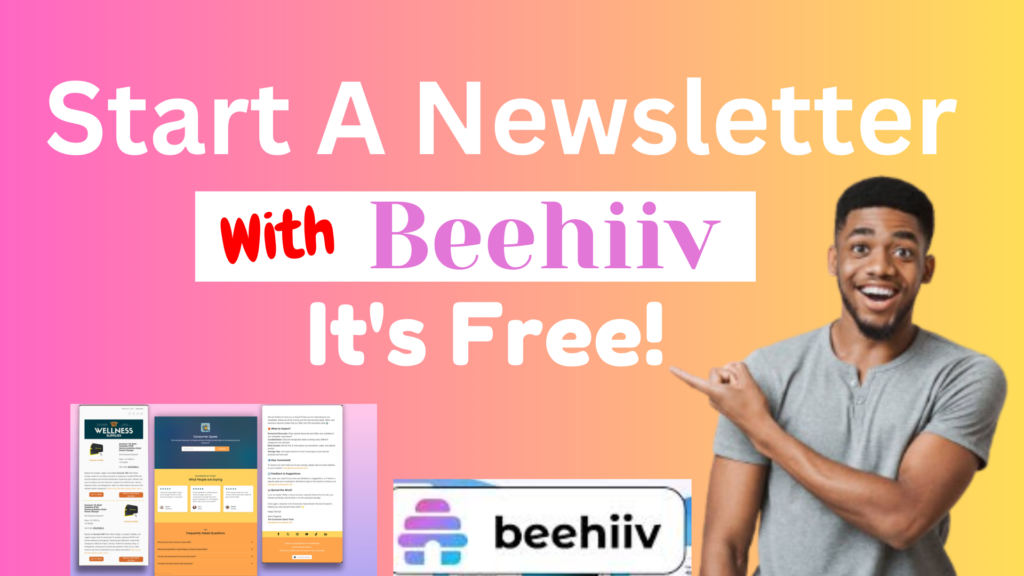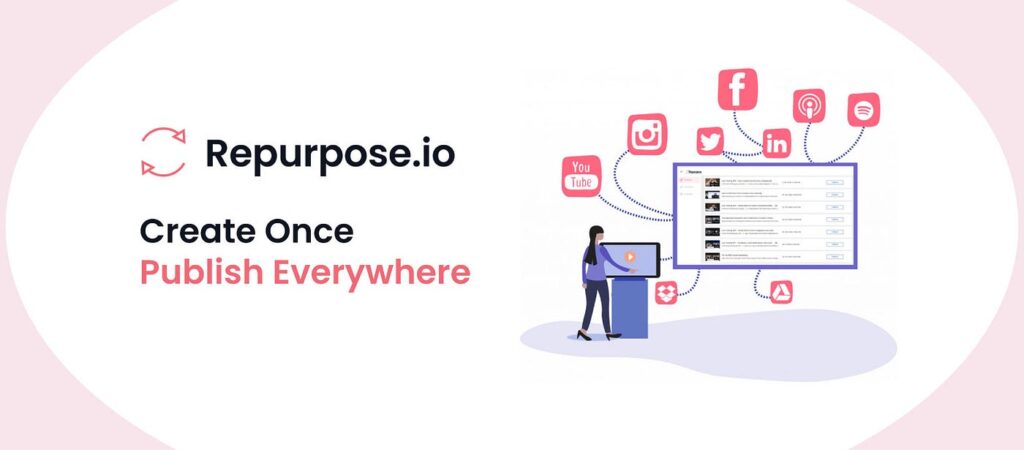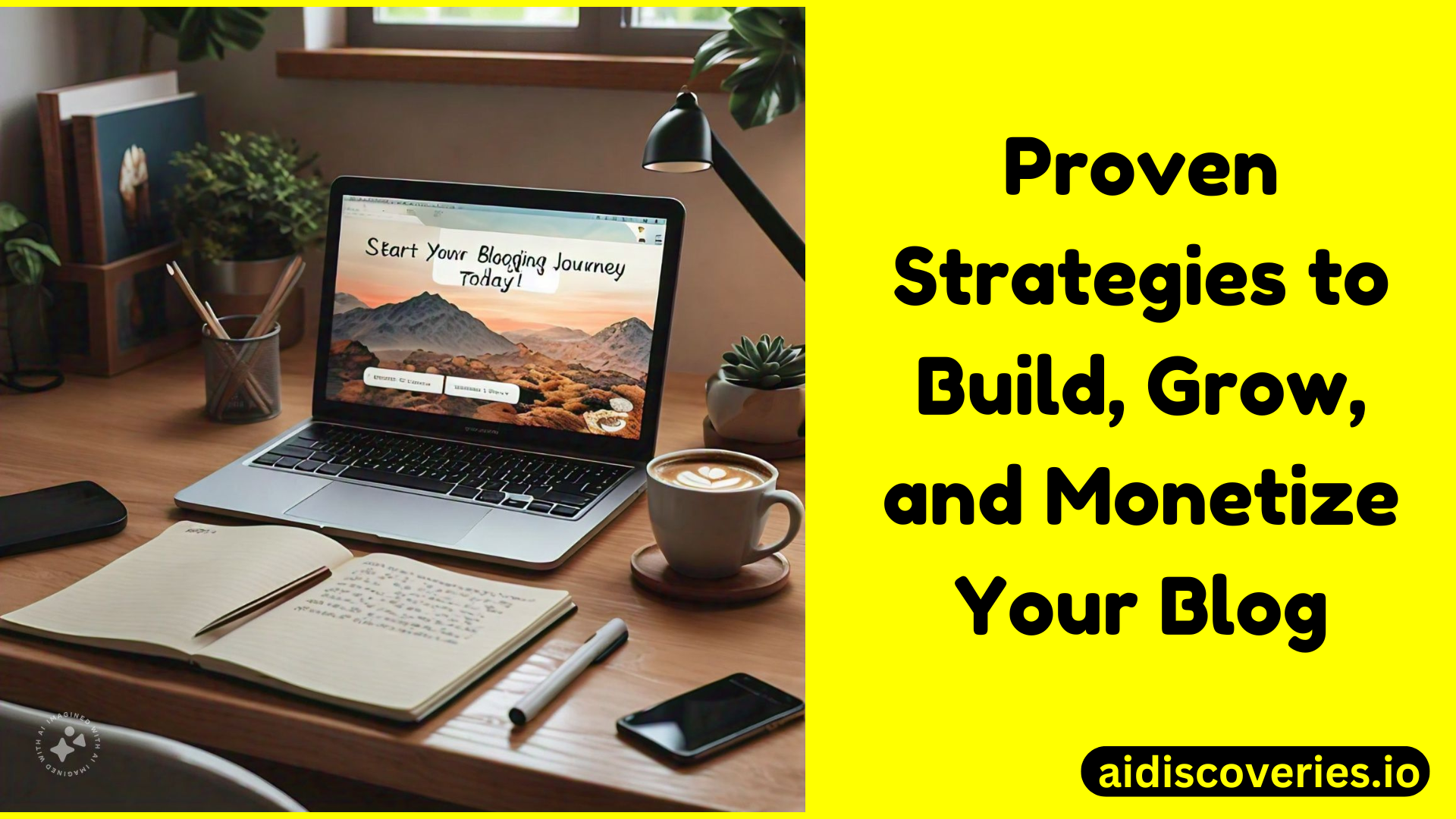Blogging has evolved from a simple online diary into a powerful tool for income generation and personal branding. For beginners, starting a blog might seem daunting, but with the right guidance, it’s an achievable goal. Whether you’re looking to share your passion, establish your expertise, or create a new income stream, this guide will walk you through the process of starting, growing, and monetizing a simple blog.

Step 1: How to Start a Blog
Choosing a Niche
Selecting a niche is the first and most crucial step in starting a blog. Your niche should reflect both your passion and market demand. This ensures that you’ll enjoy writing about the topic and that there is an audience eager to consume your content.

Tips for Choosing a Niche:
- Identify Your Interests: List topics you’re passionate about.
- Research Market Demand: Use tools like Google Trends, Ahrefs, or Ubersuggest to see if there’s enough interest.
- Consider Monetization Potential: Think about how you can make money from this niche.
Read Also: Best Platform for Managing Company Expenses in Nigeria: Flex Finance Review
Selecting a Blogging Platform
The platform you choose will determine how easy it is to manage your blog and the customization options available. WordPress is the most popular choice due to its flexibility, extensive plugin ecosystem, and large community support.

Start free Newsletter with Beehiiv here
Popular Blogging Platforms:
- WordPress.org: Self-hosted, highly customizable, and recommended for serious bloggers.
- Blogger: A free platform owned by Google, suitable for hobbyists.
- Wix: A user-friendly drag-and-drop builder, good for beginners but limited in scalability.
Here’s a comparison table of WordPress, Blogger, and Wix, highlighting their pros and cons:
| Feature | WordPress | Blogger | Wix |
|---|---|---|---|
| Ease of Use | – Steep learning curve, especially for beginners. – Extensive documentation available. | – Very easy to use; ideal for beginners. – Simple, intuitive interface. | – Drag-and-drop interface, very user-friendly. – No coding skills required. |
| Customization | – Highly customizable with thousands of themes and plugins. – Requires some technical knowledge. | – Limited customization options. – Basic themes with few customization features. | – Extensive customization with templates and design tools. – Limited by the platform’s offerings. |
| Cost | – Free with optional paid themes, plugins, and hosting. – Hosting and domain costs apply. | – Completely free, but with a “blogspot.com” subdomain. – Custom domain available at a cost. | – Free version with Wix branding. – Paid plans remove ads and offer custom domains. |
| Ownership & Control | – Full control over your site and content. – Can self-host or choose a hosting provider. | – Owned by Google; limited control over content and platform. – Risk of losing content if Google shuts down the service. | – Hosted by Wix; limited control and portability. – Content hosted on Wix’s servers. |
| SEO Capabilities | – Excellent SEO capabilities with plugins like Yoast SEO. – Full control over SEO settings. | – Basic SEO features. – Limited control over advanced SEO options. | – Decent SEO tools built-in. – Limited in comparison to WordPress, but sufficient for beginners. |
| Support & Community | – Extensive support through community forums, documentation, and third-party services. – Paid support available. | – Limited support through Google Help forums. – Small community compared to WordPress. | – 24/7 support available on paid plans. – Active user community and help center. |
| Flexibility & Scalability | – Highly flexible; can build anything from a simple blog to a complex e-commerce site. – Scalable for future growth. | – Limited to basic blogging. – Not ideal for scaling to larger projects. | – Suitable for small to medium-sized websites. – Less scalable for complex or large-scale sites. |
| Monetization | – Easy to monetize with ads, affiliate marketing, and e-commerce plugins. – Full control over monetization methods. | – Limited monetization options. – Can integrate Google AdSense, but limited compared to WordPress. | – Monetization through integrated tools and apps. – Paid plans offer more features for e-commerce. |
| Security | – Dependent on hosting provider and user setup. – Requires regular updates and maintenance for security. | – Managed by Google; reliable security. – Minimal user control over security settings. | – Wix handles all security updates. – Limited control over security measures. |
| Content Portability | – Full control over content; easy to migrate to other platforms. – Export and import tools available. | – Limited portability; difficult to move content to another platform. – Export options are basic. | – Content is tied to Wix; difficult to move to other platforms. – Limited export options. |
Summary:
- WordPress: Best for those seeking maximum control, customization, and scalability. Ideal for serious bloggers and businesses. Requires some technical know-how.
- Blogger: Great for beginners who want a simple, free, and easy-to-use platform without the need for extensive customization or monetization.
- Wix: Perfect for beginners and small businesses looking for a user-friendly, all-in-one solution with good customization but limited scalability and control.
Register Free Here to Start Generating Articles 1000+ Articles With Help of AI in Hours
Picking a Domain Name and Hosting
Your domain name is your blog’s identity on the web, so choose something memorable, easy to spell, and relevant to your niche. Hosting is where your blog lives on the internet, so it’s important to pick a reliable provider.
Steps to Choose and Register a Domain:
- Brainstorm Ideas: Use a thesaurus or domain name generators for inspiration.
- Check Availability: Use services like Namecheap or GoDaddy to see if your desired domain is available.
- Register Your Domain: Once you find an available name, register it through a domain registrar.
Choosing a Hosting Provider:
- Namecheap: Recommended by WordPress, offers affordable plans with a free domain.
- SiteGround: Known for excellent customer support and fast load times.
- HostGator: Offers budget-friendly plans and a user-friendly control panel.

Setting Up Your Blog
Once your domain and hosting are in place, it’s time to set up your blog. This involves installing WordPress (or your chosen platform), selecting a theme, and installing essential plugins.
Steps to Set Up Your Blog:
- Install WordPress: Most hosting providers offer a one-click install option.
- Choose a Theme: Pick a responsive, SEO-friendly theme that suits your niche.
- Install Essential Plugins: Start with plugins like Yoast SEO, Jetpack, and Akismet to enhance your blog’s functionality.

Step 2: Growing Your Blog
Creating High-Quality Content
Content is the backbone of your blog. Focus on producing valuable, informative, and engaging posts that resonate with your target audience. Quality content not only attracts visitors but also encourages them to return and share your posts.
Tips for Writing Engaging Posts:
- Know Your Audience: Understand their needs, problems, and interests.
- Use a Conversational Tone: Write as if you’re speaking directly to your readers.
- Incorporate Visuals: Use images, infographics, and videos to make your content more engaging.

SEO Basics for Beginners
Search Engine Optimization (SEO) is crucial for driving organic traffic to your blog. While SEO can be complex, beginners can start with basic practices that make a significant difference.
Basic SEO Tips:
- Use Relevant Keywords: Incorporate keywords naturally into your content.
- Optimize Your Titles and Headings: Make them descriptive and include your primary keyword.
- Improve Your Meta Descriptions: Write compelling meta descriptions that encourage clicks.
- Internal Linking: Link to other relevant posts on your blog to keep readers engaged and improve SEO.
Promoting Your Blog
Creating great content is just the first step; you also need to promote it. Effective promotion strategies can help you reach a wider audience and drive more traffic to your blog.
Promotion Strategies:
- Social Media Marketing: Share your posts on platforms like Facebook, Twitter, and Instagram.
- Guest Posting: Write posts for other blogs in your niche to reach new audiences.
- Engage in Online Communities: Participate in forums and groups where your target audience hangs out.
Building an Email List
An email list is one of the most valuable assets for a blogger. It allows you to communicate directly with your audience and promote your content, products, or services.
How to Build an Email List:
- Offer a Lead Magnet: Create a valuable freebie (like an ebook or checklist) to entice visitors to subscribe.
- Use Signup Forms: Place forms on your blog’s homepage, within posts, and in the sidebar.
- Engage Your Subscribers: Send regular newsletters with useful content and updates.

Sign Up Free For The Best All-in-One AI Tools Here
Step 3: Monetizing Your Blog
Affiliate Marketing
Affiliate marketing is one of the most popular ways to monetize a blog. By promoting products or services and earning a commission on sales, you can generate passive income.
Getting Started with Affiliate Marketing:
- Join Affiliate Programs: Sign up for programs like Amazon Associates, ShareASale, or CJ Affiliate.
- Choose Relevant Products: Promote products that align with your niche and audience.
- Create In-Depth Reviews: Write detailed reviews or tutorials that include your affiliate links.
Selling Products or Services
As your blog grows, you can start selling your own products or services. This could include digital products like ebooks, courses, or physical products related to your niche.
Ideas for Products and Services:
– Ebooks: Write a comprehensive guide on a topic you’ve mastered.
Online Courses: Teach your audience a skill through video lessons and worksheets.
- Consulting Services: Offer one-on-one coaching or consulting in your area of expertise.
Ad Networks and Sponsored Content
Displaying ads or writing sponsored posts can also bring in revenue. However, these methods typically require a larger audience to be effective.
Monetizing with Ads:
- Join Ad Networks: Google AdSense and Monetag are good starting point for beginners.
- Optimize Ad Placement: Place ads in high-visibility areas like the header or within content.
Sponsored Content:
- Partner with Brands: Work with brands that align with your niche to create sponsored posts.
- Maintain Authenticity: Ensure sponsored content is relevant and adds value to your audience.
[IMAGE HERE: A screenshot of Google AdSense dashboard showing earnings]
Membership Sites or Paid Content
If you have a loyal audience, consider offering exclusive content through a membership site or paid subscription model. This can include premium blog posts, videos, or access to a private community.
Creating a Membership Site:
- Choose a Platform: Use plugins like MemberPress or Patreon to manage memberships.
- Offer Value: Ensure the content behind the paywall is worth the subscription fee.
- Promote Your Membership: Use your blog and email list to encourage sign-ups.
[IMAGE HERE: A photo of a membership site login page]
Common Mistakes to Avoid
Neglecting SEO
Ignoring SEO can significantly hinder your blog’s growth. From the start, focus on optimizing your content for search engines to attract organic traffic.
Key SEO Mistakes to Avoid:
- Keyword Stuffing: Avoid overusing keywords; it can lead to penalties.
- Ignoring Meta Descriptions: Always fill out meta descriptions with compelling copy.
- Not Using Analytics: Track your performance to see what works and what doesn’t.
Ignoring Analytics
Analytics provide insights into your blog’s performance, helping you understand what content resonates with your audience and where to improve.
Important Metrics to Monitor:
- Traffic Sources: Know where your visitors are coming from.
- Bounce Rate: Track how long visitors stay on your blog.
- Conversion Rate: Monitor how many visitors complete a desired action, like subscribing to your email list.
Focusing on Quantity Over Quality
Publishing numerous posts won’t help if the quality isn’t there. Focus on creating fewer, high-quality posts that provide real value to your audience.
Quality Over Quantity:
- In-Depth Research: Ensure your posts are well-researched and informative.
- Engaging Writing: Write in a way that keeps your readers hooked from start to finish.
- Visual Support: Use images, infographics, and videos to complement your content.
Conclusion
Starting, growing, and monetizing a blog as a beginner is a journey that requires dedication, patience, and continuous learning. By choosing the right niche, creating valuable content, and employing smart promotion and monetization strategies, you can build a successful blog that not only shares your passion with the world but also generates income.
Remember, the key to success in blogging is consistency. Keep learning, adapting, and refining your approach as you go. The blogging world is full of opportunities, and with the right mindset and tools, you can turn your simple blog into a thriving online business.
Ready to start your blogging journey? Subscribe to our free newsletter here, where we send you tips, tools, and templates to help you get started.
Pro Tip
Designing Your Site
Once you’ve picked your platform, focus on designing your site:
- Choose a Clean Layout: Opt for a design that is easy to navigate and visually appealing. Avoid clutter and focus on a layout that highlights your content.
- Select a Theme: Pick a theme that aligns with your blog’s purpose. Many platforms offer free and paid themes. Customize it to fit your style and brand.
- Ensure Mobile Friendliness: Make sure your site looks good on mobile devices. A responsive design ensures that your blog is accessible and user-friendly across all devices.
Writing Your First Posts
With your site set up, it’s time to start creating content:
- Start with a Strong Introduction: Write a compelling introduction that grabs your readers’ attention and clearly explains what your blog is about.
- Create Valuable Content: Focus on providing value to your readers. Share insights, tips, or stories that are relevant to your niche.
- Edit and Proofread: Ensure your posts are free of errors and easy to read. Clear, concise writing with proper grammar and spelling makes your blog more professional and enjoyable.
By carefully choosing your platform, designing an attractive site, and crafting engaging content, you’ll set a strong foundation for your blog’s success. Keep these tips in mind as you begin your blogging journey!
Helpful Tools You can Try Out Today!
- Start Your Podcast Free Here!
- Build Your Brand: Step-By-Step Guide!
- Beehiiv – A Free Platform to Build Your Newsletter
- Get Cheap Domain name and Webhosting for your business
- Skool – Platform to Build Your Paid Community (14 Days Free Trial)
- Book Your next Vaccation Tour to popular sites in any country worldwide here


